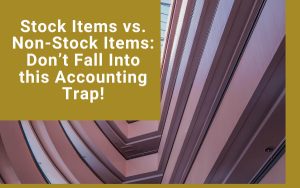Stock Items vs. Non-Stock Items: Don’t Fall Into this Accounting Trap!
JD Edwards Stock Items & Non-Stock Items: Don’t Fall Into this Accounting Trap!
Edward Gutkowski | Chief Architect RapidReconciler

It is quite common for organizations to use the JD Edwards inventory system to track both stock items (which is obvious) and non-stock items (not so much). A stock item has associated cost data and its value is maintained on the general ledger balance sheet.
Conversely, when tracking non-stock items in the inventory system the associated inventory cost should be zero. This is because the value of the item is expensed at time of receipt and is booked directly to the profit and loss statement. Examples of typical “non-stock” items could include tooling, stationery, washers, or other inexpensive items where it’s deemed easier to expense than to track.
So, what is the accounting trap of which I speak? Well, it all comes down to JD Edwards GL class code assignment and how your DMAAI’s are configured. The trick is to have distinct class codes designated for use only with non-stock items!
Recently I had been working with a company that mixed the GL class codes. They had set up a new item using a non-stock GL class, started transacting, then changed it to a stock class after they realized the error.
So, what was the impact? For each transaction using the wrong code, the value was making a direct impact on their P&L! Once the error was corrected, future transactions would work properly, but there was no automatic journal entry fixing the prior discrepancies. Of course, this resulted in reconciling problems that could have easily been avoided.
Moral of the story … use separate GL class codes for any non-stock items you need to track in the inventory system,
and never assign one to a stock item! I hope you enjoyed this article on JD Edwards Stock Items & Non-Stock Items!
Happy reconciling!
FOR MORE INFORMATION ON GSI'S JD EDWARDS SERVICE OFFERINGS
CONTACT US TODAY
FOR MORE INFORMATION ON GSI'S JD EDWARDS SERVICES
